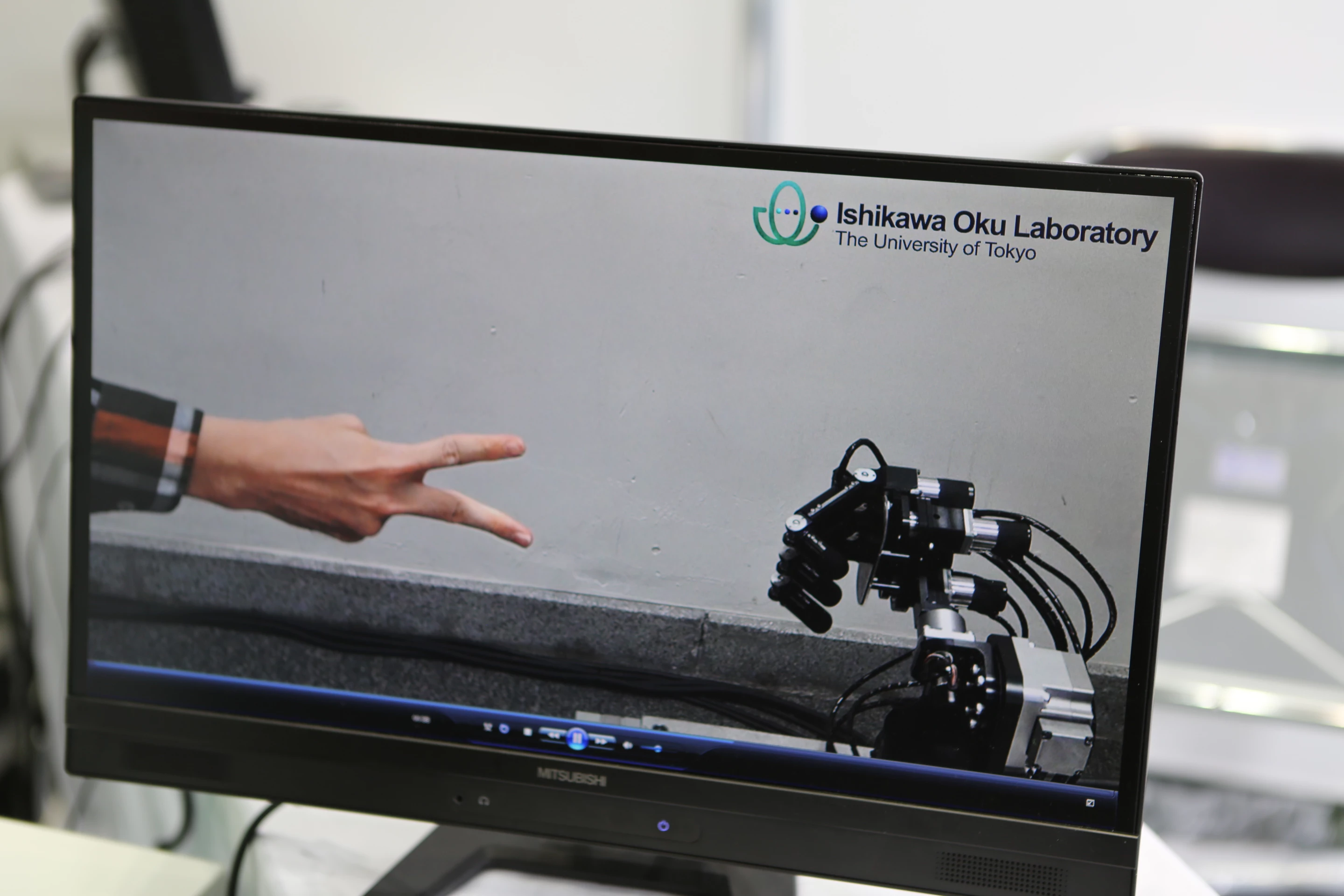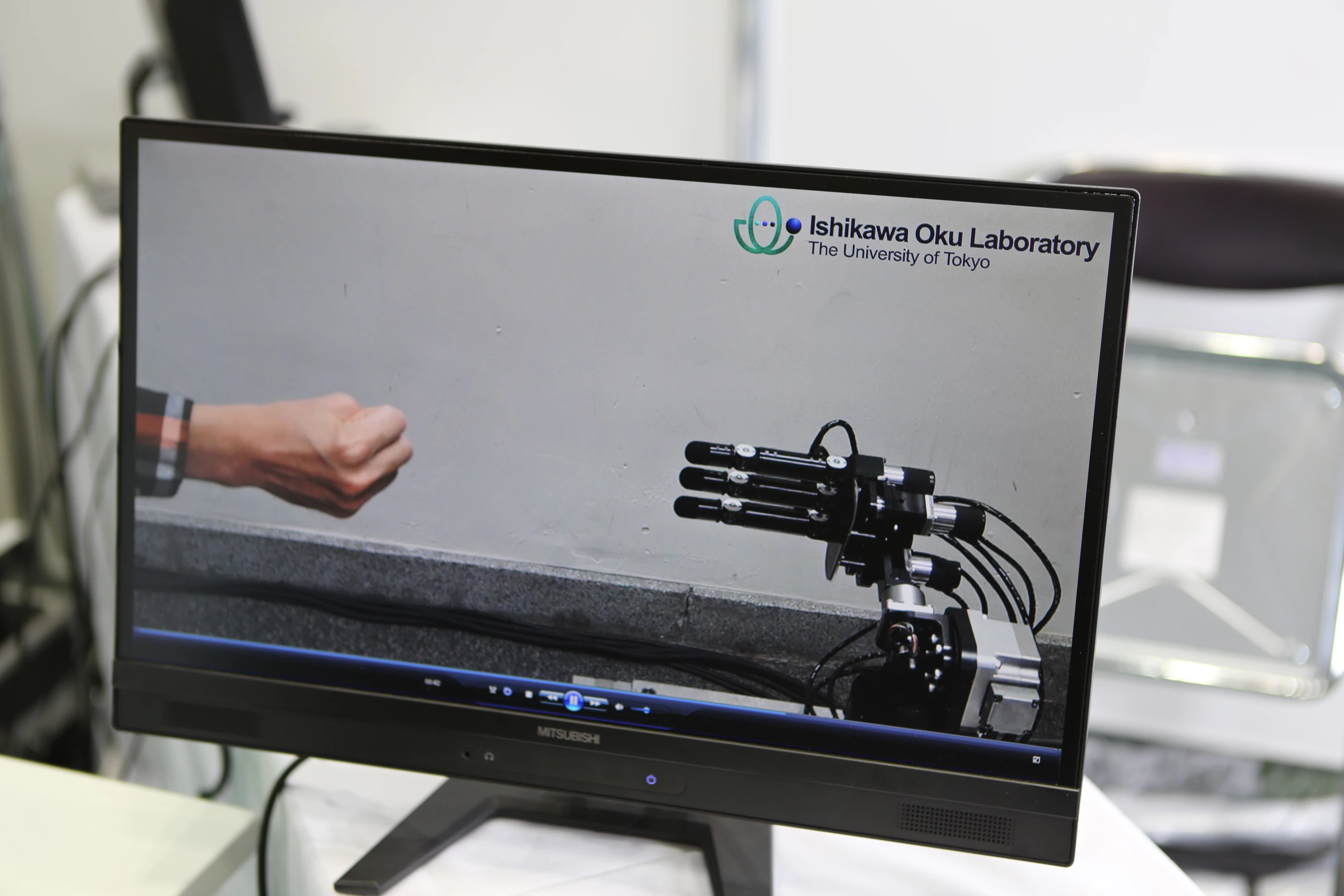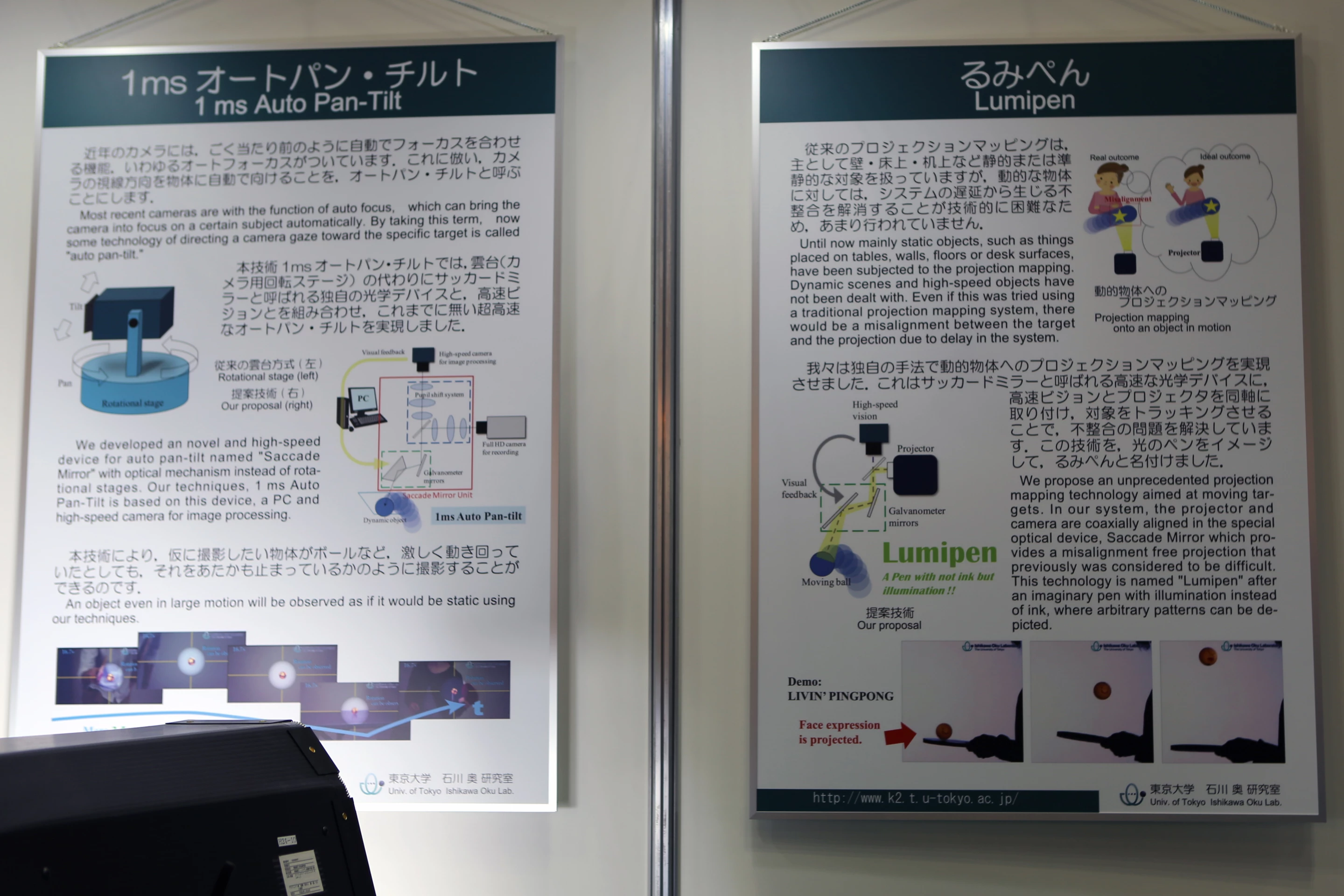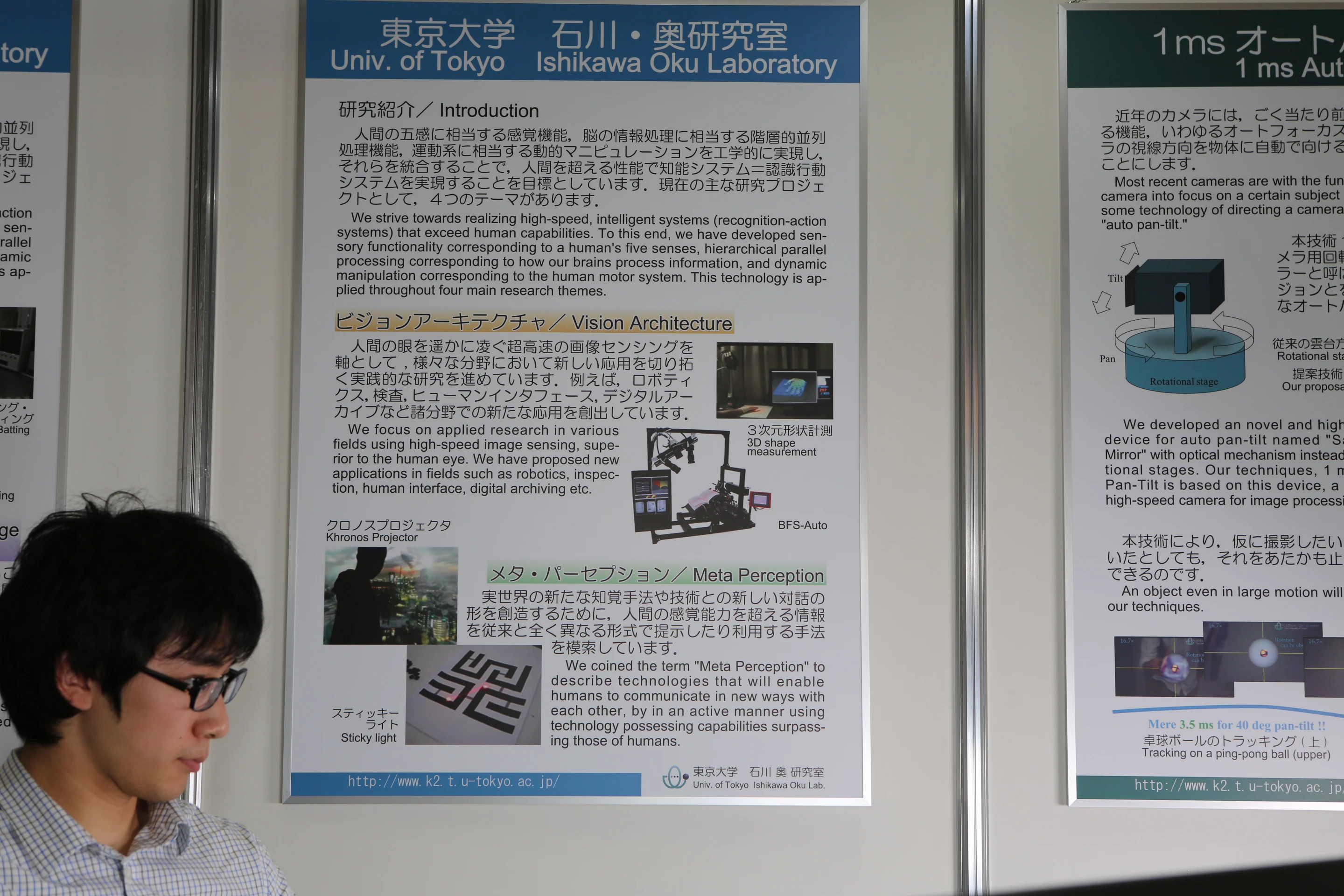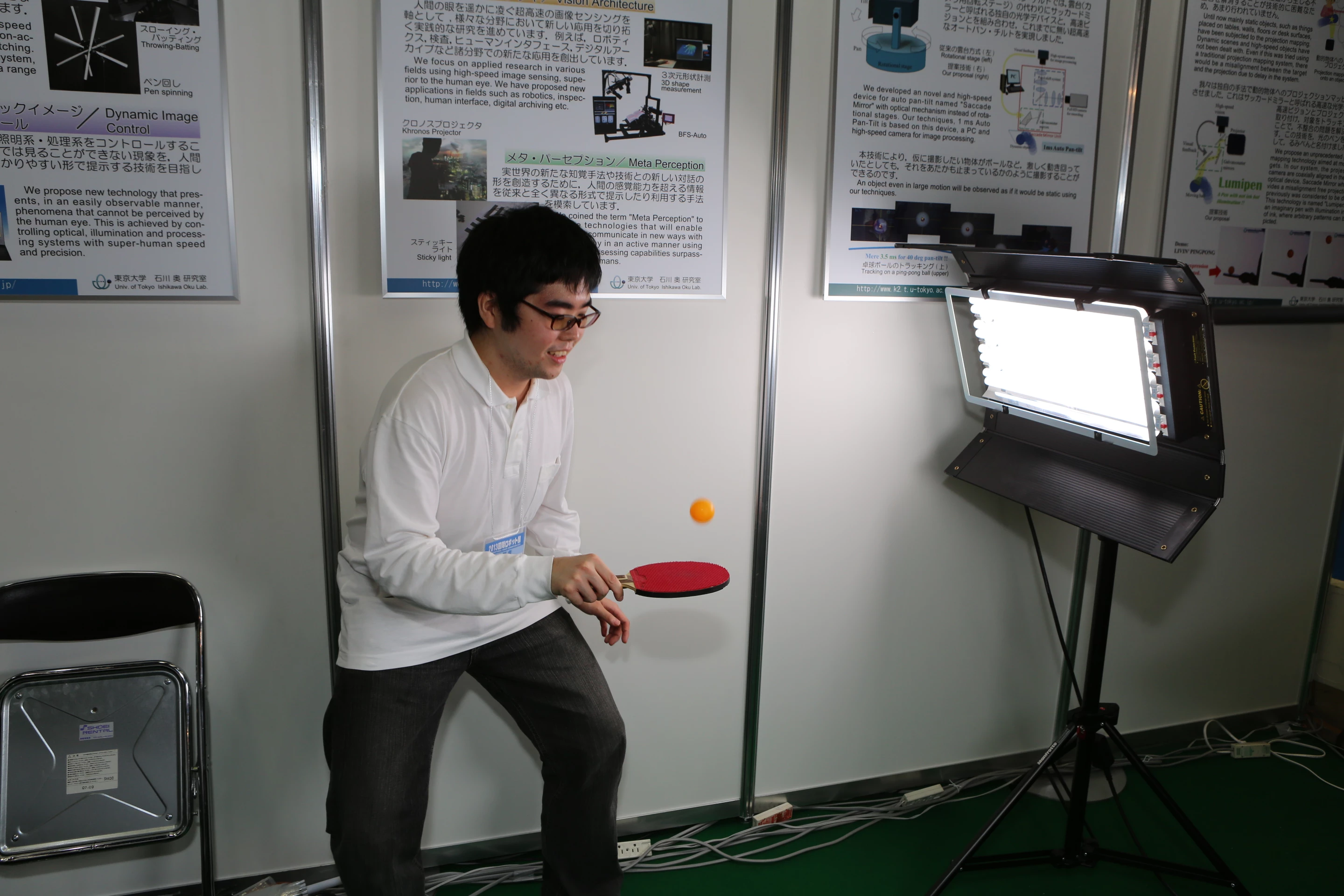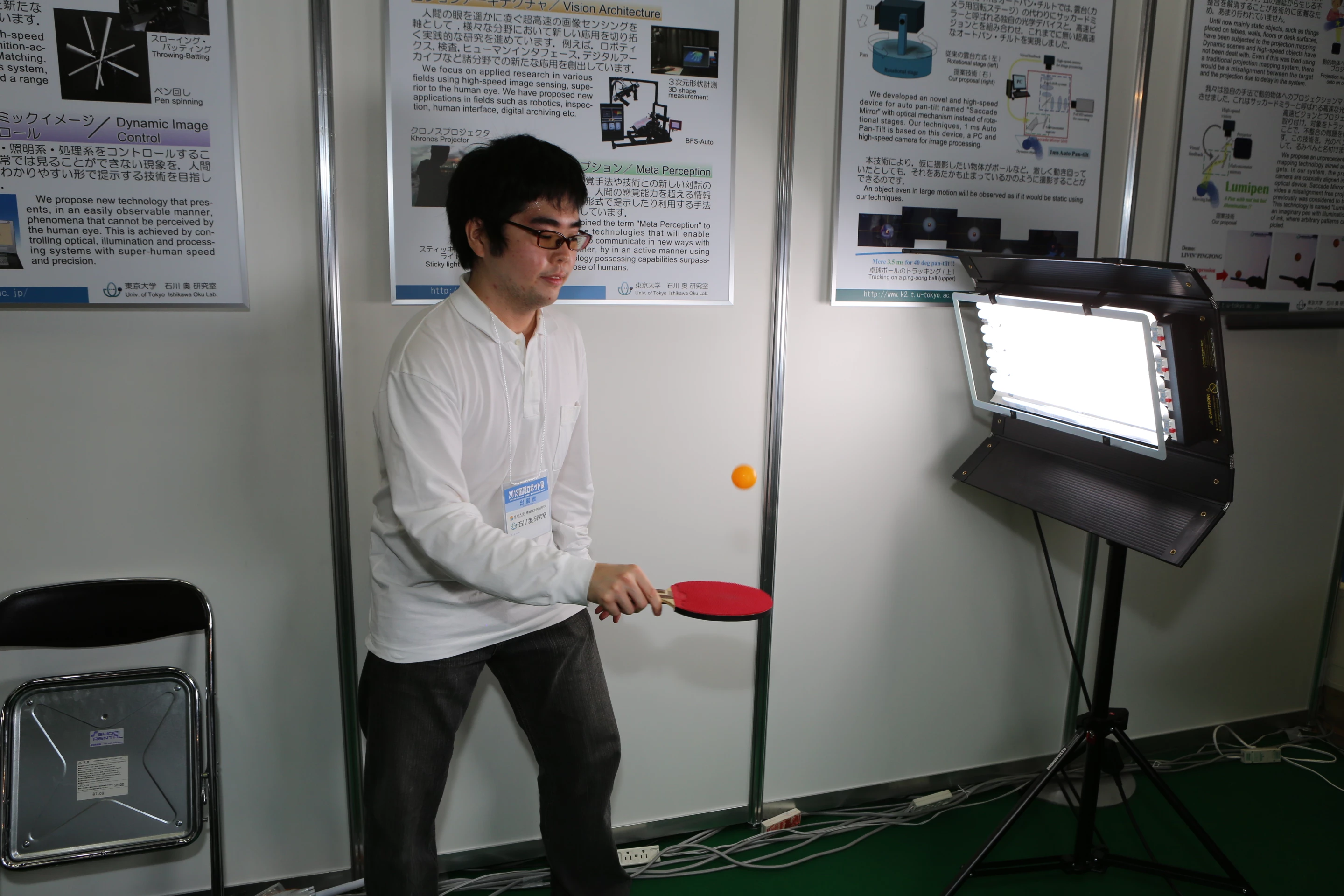Remember that high speed robot from last year, that could beat humans at rock, paper, scissors? Since then, researchers at the University of Tokyo's Ishikawa Oku Lab have continued to work on it. The result? Well, they couldn't really improve its accuracy beyond 100 percent, so instead they made it faster.
The earlier version of the robot, which consists of a high speed vision sensor and a simplistic robot hand, was able to recognize its opponent's choice of rock, paper, or scissors as their fingers moved into position in a matter of milliseconds. However, it took the robot hand another 20 milliseconds to position its own fingers and win the game. This minor delay, barely perceptible to the human eye, revealed that the robot was cheating, since it was technically showing its hand after the human had already played his/her hand.
To make the robot faster, the team developed a new form of camera "auto pan-tilt", which the researchers compare to a camera's auto-focus. Normally such a system physically pans and tilts the camera to keep a target in frame, but this has its limitations. The motors can only move so fast, and they introduce subtle vibrations, which introduces problems when tracking rapidly moving objects. Instead, the researchers developed a system that ditches motorization in favor of mirrors to achieve similar results in just 1 millisecond. It's fast enough to keep a rapidly bouncing ball perfectly still in the center of the video frame, which was the key to tracking the hand position and fingers faster than ever before.
Thanks to its new "Saccade Mirror" technique, the high-speed robot is able to recognize the human player's strategy earlier, and so the robot appears to be showing its hand at exactly the same time as its opponent. Whether or not you feel this is cheating, the team has virtually perfected the robot's sleight of hand technique.
It's a simple, but somewhat humbling example of how technology may interact with humans in the future. Imagine being able to record and analyze moving objects using this new auto pan-tilt system; the possibilities are almost endless. The team has already developed a similar system that can scan books in mere seconds by flipping through the pages ala Johnny 5 from the cult '80s flick Short Circuit. And in the future, we could see high speed cameras with image recognition put to use in all kinds of robots, from self-driving cars to the RoboCup Soccer league, which hopes to beat the human world champions by the year 2050. Maybe the robot goalies will be able to defend the net with 100 percent accuracy?
For the time being, we'll have to make do with the game of rock, paper, scissors. You can watch the latest version of the robot in the following video, and check out photos in the gallery taken from the lab's demo booth at IREX 2013.
Source: Ishikawa Oku Lab via Robonable






